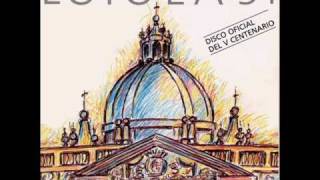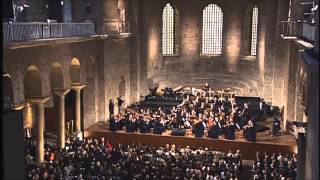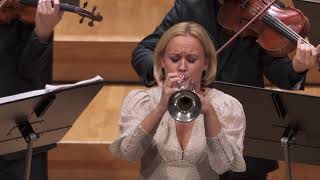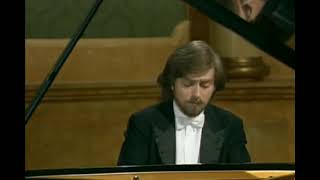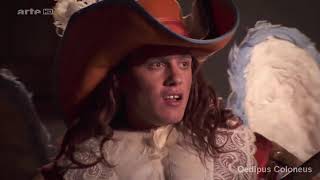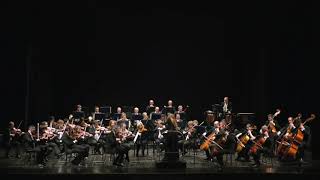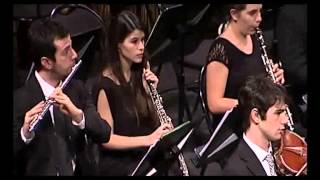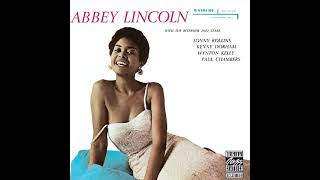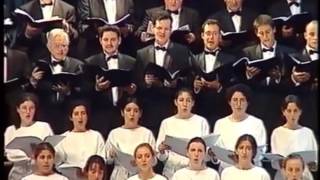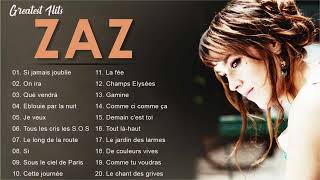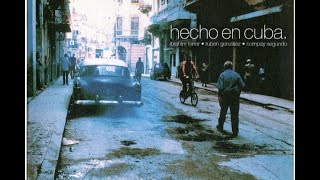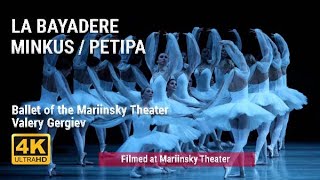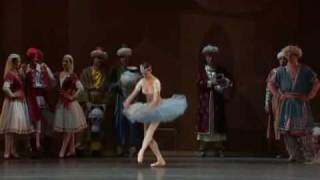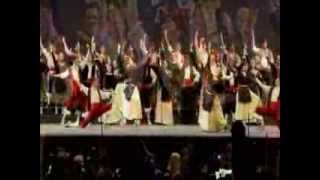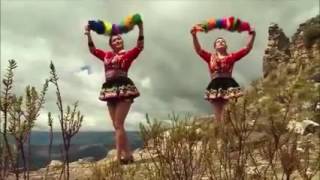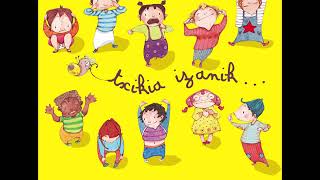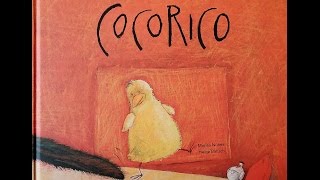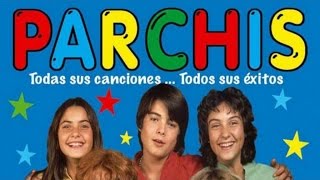On July 31, the festival of St. Ignatius is celebrated
Recommended music videos for initiation to classical music
Ignatius of Loyola (1491-1556) was a Basque military man, and later religious, who emerged as a religious leader during the Counter-Reformation ; His devotion to the Catholic Church was characterized by absolute obedience to the Pope . Founder of the Society of Jesus, he led it for fifteen years, remaining in Rome . His Spiritual Exercises , published in 1548, exerted a proverbial influence on later spirituality. Methodist Jesse Lyman Hurlbut considered Ignatius of Loyola to be one of the most notable and influential personalities of the 16th century . Pope Gregory
Nemesio Otaño y Eguino (1880 –1956) was a Jesuit composer and musicologist. At age 6 he began studying music theory, piano at age 8, and organ at age 11. In 1896 he entered the Society of Jesus and was soon appointed organist of the Basilica of Loyola . In 1907 he organized the First National Congress of Sacred Music in Valladolid ; That same year he founded Música Sacra Hispana , a magazine that he directed until 1922; He also created and directed the famous Schola Cantorum of the Pontifical University of Comillas and between 1940 and 1951 he directed the Madrid Conservatory . Throughout his life Otaño wrote abundant works of popular and religious inspiration. In 1941 he was named Knight of the Order of Alfonso X the Wise and in 1943 he entered the Academy of Fine Arts of San Fernando .
The March of San Ignacio was written by Nemesio Otaño for the celebration of the first centenary of the Reestablishment of the Society of Jesus . The version that we present today is offered to us by the Orfeón Donostiarra, the Escolanía and the Chorale of San Ignacio of San Sebastián, the Eskifaia Chorale of Fuenterrabía, the Choirs of Azpeitia and Azkoitia, the organist and concert pianist José Manuel Azkue and the Euskadi Symphony Orchestra , directed by all of them by maestro Enrique Ugarte .
Franz Joseph Haydn (1732-1809), Austrian composer whose brother Michael Haydn was also a notable composer, was one of the main pillars on which classicism (1750-1810) was based. At six years of age he began his studies of harpsichord and violin. At the age of eight he was admitted as a choralist at St. Stephen's Cathedral in Vienna where he continued his musical studies. After changing his voice, he had to survive by working multiple jobs, while studying composition analyzing the works of Carl Philipp Emanuel Bach . He maintained a close friendship with Mozart and was Beethoven 's teacher. He laid the main foundations of the sonata form and the formal structure of the string quartet and the symphony. He died at the age of 77 in Vienna .
The catalog of Haydn's works . The works of Joseph Haydn are today classified according to the system created by Anthony van Hoboken and revised and completed by Robbins Landon and his wife Christa , which has been universally adopted, although it is now known that it does not accurately reflect the chronology and composition of the works. works, criteria used by Hoboken in the catalog. Each work is identified with a Roman numeral that corresponds to the category, which in most cases corresponds to a genre. Some categories have subdivisions, which are indicated with a lowercase letter and then an Arabic number appears that corresponds to the order of the specific work within the category. These figures are preceded by the word Hoboken (in memory of the catalog's author) and sometimes by Hob .
Symphony No. 94 , Hoboken I: 94 in G major, called The Surprise, by Joseph Haydn , was composed around 1791, and is one of his best-known works. It owes its name, and much of its fame, to its second movement, a masterful theme with variations in which, after a piano beginning, a sudden fortissimo chord is heard. It was premiered at the Hanover Square Rooms in London on March 23, 1792 with enormous success among the public and critics. The aforementioned movement, Andante , was the one that generated the most enthusiasm and the one that we offer today under the direction of the Latvian maestro Mariss Jansons .
Edvard Grieg (1843-1907) was a Norwegian composer and pianist, considered one of the main representatives of musical romanticism. His mother, Gesine , was his first piano teacher; Later, she met the legendary Norwegian violinist Ole Bull , a family friend and her mother's brother-in-law. Grieg adapted many themes and songs from his country's folklore, thus contributing to creating a Norwegian national identity, just as Jean Sibelius did in Finland or Antonín Dvořák in Bohemia . His most important works are: the Piano Concerto in A minor , the intimate Lyrical Pieces (for piano), the Holberg Suite (for string orchestra) and, especially, Peer Gynt, incidental music that he wrote at the request of the writer Henrik Ibsen for his homonymous drama.
Catalog of Grieg's works . His works are classified by their Opus number ( from the Latin opus 'work'; op. abbreviation) which is a term used in music to catalog the works of most composers since the 17th century .
Two Elegiac Melodies (Two elegiac melodies) op. 34 , is a two-movement composition for string orchestra by Edvard Grieg , completed in 1880 and first published in 1881. The two movements are instrumental arrangements Grieg made of two of his 12 Melodies, Op. 33 , published in 1880: these were settings for voice and piano of words by the Norwegian poet and journalist Aasmund Olavsson Vinje .
The Last Spring. It is the second of the two movements of the work; movement that today we offer arranged for trumpet solo accompanied by string orchestra. In the words of Vinje , the poet describes the beauty of the countryside in spring, which appears after the snow of winter; She thinks she might be seeing him for the last time. Arranged by Jarle Storløkken , the performance is offered by the Norwegian trumpeter Tine Thing Helseth , accompanied by the Norwegian Chamber Orchestra conducted by its concertmaster Arvid Engegård .
Johann Strauss (son) (1825-1899) was an Austrian composer, son of Johann Strauss and brother of the composers Josef Strauss and Eduard Strauss . Known in life as “the king of the waltz”, he was an essential factor in its evolution and sophistication, going from being a peasant dance to an entertainment dance of the Imperial Court . He is the best known of the family for his waltzes, his polkas and his marches; composer, also, of several operettas. His father wanted to prevent his son from going through the hardships of a musician's life, so it was his mother who helped and encouraged him to focus on music. His work forms the basis of the repertoire offered annually at the Vienna Philharmonic Orchestra 's New Year's Concert .
Catalog of the works of Strauss II . His works, like those of Grieg that we have referred to above, are classified by their Opus number.
The waltz (from Germanic Walzer , a term from the German verb walzen , 'to spin, roll') is an elegant ballroom dance, documented in its definitive form since the end of the 18th century . It is the evolution of an ancient dance from the 12th century , originating in Tyrol (Austria) and southern Germany . The waltz gained its nobility in Vienna during the 1760s, quickly expanding to other countries. Some authors believe that the waltz had its origin in the volte or volta , a 3-beat dance practiced during the 16th century . The word waltz was born in the 18th century , when this dance was introduced into opera and ballet. Its most significant characteristic is that its time signature is 3/4.
Frühlingsstimmen (Voices of Spring), op. 410, is a waltz composed by Johann Strauss Jr. in 1882 and conceived as a waltz for soloist with choir accompaniment, to be performed at a benefit concert held at the Theater an der Wien . The theme has been widely used throughout history as an accompaniment to various audiovisual shows. Today it is offered to us by the splendid Slovak soprano Patricia Janečková .
Recommended classical music videos
Domenico Zipoli (1688–1726) was an Italian-Latin baroque composer, considered the most famous European composer to have traveled to America during the colonial period. From 1707 he studied in Florence , Naples, Bologna and Rome where he held various positions, the most important of which was that of organist of the Chiesa del Gesú . During the first months of 1716, Zipoli traveled to Seville, where he began his novitiate, entering the Jesuit Province of Paraguay on July 1. The following year he settled in Córdoba , Argentina , where he completed his studies in philosophy and theology. He died in 1726 due to an infectious disease, probably tuberculosis, after writing abundant religious works and the opera that we present today.
San Ignacio de Loyola is an opera in two acts with an eminently pedagogical libretto whose purpose was evangelization. The main characters are Saint Ignatius of Loyola, Saint Francis Xavier and the Devil who unsuccessfully tempts the two saints. Being a work written to be performed in missions, usually by children, it is written for a treble voice range. (Extracted from Scherzo Magazine) .
The version that we offer today is conducted by maestro Gabriel Garrido .
Ludwig van Beethoven (1770-1827) together with Bach and Mozart is part of the trio of giants of Western music. Born in Bonn , his father of Flemish origin, tried to make him a second Mozart , although it was a notable failure. Despite this, from the age of nine the organist Christian Gottlob Neefe captivated him with the study of Bach . In 1787 he moved to Vienna with the intention of taking Mozart classes, but the death of his mother returned him to Bonn a few days later. And so after five years, he returned to Vienna where he contacted Haydn and Salieri , becoming known as a composer and pianist with notable public recognition. However, his profession as a pianist could not be carried out due to deafness that attacked him the following year until he was completely incapable of this faculty.
The catalog of Beethoven's works . There are 138 musical works composed by Beethoven arranged by opus , assigned by the composer's editors while he was alive. On the sidelines, there are another 205 works that do not have an opus number and that were published after the composer's death. These works were assigned WoO numbers (Werke ohne Opuszahl, "works without opus number"). This catalog was first produced by Georg Kinsky and Hans Halm (Das Werk Beethovens) in 1955.
The Symphony No. 1 in C major, Op. 21 was composed by Ludwig van Beethoven between 1799 and 1800 and unlike many of his later works, there is no written evidence of its genesis, since not a single autograph score has been preserved. complete nor its sketches. Furthermore, the symphony is clearly indebted to its predecessors, particularly its teacher Joseph Haydn and Wolfgang Amadeus Mozart . However, it exhibits features that uniquely mark it as Beethoven 's work, particularly the frequent use of szandondi , as well as sudden changes in tonal centers that were uncommon in the traditional symphonic form (especially in the third movement). , and the prominent and independent use of wind instruments.
Structure . The symphony consists of four movements: I (0´29´´) ADAGIO MOLTO – (1´54´) ALLEGRO CON BRIO. It is written in C major in sonata form ( exposition-development-reexposition, coda).-. II (9´30´´) ANDANTE CANTABILE WITH MOTORCYCLE. Written in the subdominant key of F major, it also adopts the .- sonata form. III (16´30´´) MENUETTO. ALLEGRO MOLTO E VIVACE. It resumes the initial key of C major, the time signature is 3/4 and responds to the tripartite form of the Menuetto.- . IV (20'04'') ADAGIO – (20'37'') ALLEGRO MOLTO E VIVACE. It also returns to the initial key of C Major, the time signature is 2/4 and follows the sonata form once again.
Today it is offered to us by the Orchestra Filarmonica Marchigiana conducted by the Italian maestro Beatrice Venezi .
Federico Moreno Torroba (1891-1982), born in Madrid , was one of the most vital and prolific cultivators of zarzuelas of the 20th century as well as a music critic and composer of pieces for guitar. Born into a family of musicians, he received his first lessons from his father José Moreno Ballesteros , organist of the Iglesia de la Concepción , and from Conrado del Campo at the Madrid Conservatory . His career as a composer was directed to the symphonic field, but he soon turned to zarzuela , composing about fifty titles. He affirmed his expressive style in the most traditional Spanish style , with direct and simple language, but of great formal elegance. In 1974 he took the position of president of the General Society of Authors of Spain , which he held until his death.
The Concerto is a musical form written for one or more solo instruments accompanied by an instrumental ensemble. It was Vivaldi who established the fundamental bases of its structure with three movements (I Fast-II Slow-III Fast) and presented as a dialogue between soloist(s) and instrumental ensemble.
The Concerto of Castilla is a concerto for guitar and orchestra written by Moreno Torroba and structured in three movements with a cadence towards the end of the first: I (1´08´´) ADAGIO - ALLEGRO MODERATO .-. II (8'22'') Andante Mosso .-. III (12´48´´) ANDANTE - ALLEGRO MODERATO. Concert unfairly unknown to the general public, which today we have the pleasure of offering with the Hungarian guitarist Beatrix Kapolcsi , as soloist.
Bent Sørensen (1958) is a Danish composer. He won the prestigious Grawemeyer Prize for Musical Composition in 2018 for L'isola della Città . He studied composition with Ib Nørholm at the Royal Danish Academy of Music and with Per Nørgård at the Royal Academy of Music in Aarhus . Sørensen treats major/minor keys with microtonal inflections and blurs harmonies with glissandi . Examples of this technique can be found in his trombone concerto " Birds and Bells ", a work for orchestra and choir " Echoing Garden ", and his violin concerto " Sterbende Gärten ", which won the prestigious Nordic Council Music Prize in 1996. The works treat popular songs in a prosaic way.
Sørensen has composed in a variety of media, including opera (his " Under the Sky " premiered in 2004 at the Royal Opera House in Copenhagen ), orchestra, choir, chamber ensemble and solo instruments; although in particular he has not composed electroacoustic music. Since 2008 he has been visiting professor of composition at the Royal Academy of Music in London .
Recommended music videos for all tastes
Abbey Lincoln (real name Anna Marie Wooldridge. 1930 – 2010) was an American jazz singer and songwriter, as well as an actress and writer. She is one of the most prestigious female voices in jazz who also opened new paths to jazz singing. Strongly influenced by Billie Holiday , she dramatized her performances by always being very aware of the meaning and feeling of the lyrics she sang. His voice could be powerful and deep, but his intonation frequently broke with what would be conventionally orthodox diction and tone to adapt to what he was singing, phrasing slowly. His way of singing was also closely linked to the tradition of black American preachers.
Mikel Laboa (1934-2008) was one of the most important singer-songwriters in Basque at the end of the 20th century . Considered the patriarch of Basque music, his music has influenced younger generations. His album Bat-Hiru was chosen in the Diario Vasco by popular vote as the best Basque album in history. Born in Donostia/San Sebastián , he spent two years of his childhood in the Biscayan town of Lekeitio. He studied Medicine and Psychiatry in Iruña/Pamplona and always combined his artistic career with that of a doctor. His music can be defined as a combination of tradition, poetry and experimentalism, in the style of the singer-songwriters of the 60s and 70s, but endowed with a strong personal touch and a very particular voice.
The video that we offer today consists of two songs. Txoria txori (0´8´´) is a Basque poem written by Joxean Artze in 1957 and set to music by Mikel Laboa in 1968. “If I had cut off its wings it would have been mine, it would not have escaped me. But like this, I would have stopped being a bird.” Artze was 25 years old when he wrote this poem that is about freedom and about possession, dominance and respect between people and animals. Baga, biga, higa (4'09'') is a song composed by Mikel Laboa in 1969. The lyrics come from two onomatopoeic poems from traditional Basque folklore. The performance is offered to us by Mikel Laboa as soloist, accompanied by the Orfeón Donostiarra and the Euskadi Symphony ; all of them directed by Víctor Pablo Pérez .
Zaz (real name Isabelle Geffroy , Chambray-lès-Tours, May 1, 1980), is a French singer-songwriter who fuses French song with gypsy jazz . She became famous with her song Je veux, the second song from her first album, Zaz , which was released on May 10, 2010. She currently has five studio albums: Zaz (2010), Recto verso (2013), Paris (2014), Effet miroir (2018) and Isa (2021); and two live albums: Sans tsu tsou (2011) and Sur la route (2016). In November 2010, his debut album Zaz went double platinum. She also received the " Breakthrough Song" award from the Charles-Cros Academy . She has also received the European Border Breaker Awards for being the most listened to French artist outside of France in 2010.
Buena Vista Social Club was the name of a very popular social club in Havana , whose members practiced dancing and music. Shortly after the Cuban Revolution of 1959, the new Cuban president Manuel Urrutia Lleó began a program of closing or nationalizing gambling stores, nightclubs and other venues associated with the hedonistic lifestyle of Havana , among which was the Buena View Social Club . Under the same name, a musical group with traditional Cuban musicians, many of them former members of the club, performed in Amsterdam in 1998. German film director Wim Wenders recorded the performance, followed by a second concert at Carnegie Hall in New York that was an international success.
Recommended peculiar videos
Ludwig Minkus (1826-1917) was an Austrian violinist and composer of ballet music. He studied at the Vienna Conservatory . At that time, while he composed music for ballet, he performed as a violin soloist and founded an orchestra that would compete with that of the young Johann Strauss . In 1846, Minkus moved to Paris and that same year the ballet Paquita premiered, with music by Édouard Deldevez assisted by Minkus . In 1847 he settled in Russia ; In 1861, he joined the Bolshoi Theater Orchestra as a violinist; a year later, as director and two years later he was appointed composer of the Bolshoi Ballet . Although permanently settled in Russia , he maintained his ties with Paris and in 1866 he traveled to the French capital to compose the new ballet La Source .
La Bayadère is a ballet created by the French choreographer Marius Petipa with music by Ludwig Minkus , originally performed in four acts and seven tables, although currently the number of acts varies depending on the company and the choreographic version; which means that on some occasions two acts are danced and on others, three. The Austrian composer Minkus set music to a libretto written by Sergei Judekov and Paipa based on two dramas by the Indian poet Kālidāsa . The ballet premiered at the Bolshoi Kamenny Theater in Saint Petersburg on January 23, 1877 with Lev Ivanov in the role of Solor , while the character of Nikiya was danced by Ekaterina Vázem . Today La Bayadère is considered one of the basic works of the classical ballet repertoire.
Today's staging is offered to us by The Bolshoi Theater in Moscow with Svetlana Zakharova and Vladislav Lantratov as main artists.
Adolphe Adam (1803-1856) was a French composer born in Paris and author of abundant stage music. His first successes came in his adulthood with the ballet Giselle and the opera Si j'étais roi ; By then he had already written several ballets and operas; In total he wrote 40 operas, 14 ballets and various cantatas, hymns, masses, choirs, piano pieces, pantomimes, military marches and plays; Of all these compositions it is worth highlighting, in addition to those already mentioned, the carol Cantique de Noël, known worldwide, in its English translation, as O Holy Night and the ballet Le Corsaire . From 1849 until his death in 1856 he was professor of composition at the Paris Conservatory .
The Pas de Trois that we offer today belongs to the ballet in three acts, Le Corsaire with music by Adolphe Adam and libretto by Jules-Henri Vernoy de Saint-Georges , inspired by the poem The Corsair by Lord Byron and the opera derived from it. , Verdi 's Corsair . The original choreography is by Joseph Mazilier and it premiered for the first time in 1856 at the Paris Opera . However, in 1868, Marius Petipa and Jules Perrot performed a renewal of the ballet for the Bolshoi Theater in Moscow . This version is the one from which most subsequent adaptations and productions are derived.
Tomás Bretón (1850-1923) was a Spanish composer and violinist born in Salamanca. He completed his first musical studies at the San Eloy School of Nobles and Fine Arts in his hometown. At the age of 16, he moved to Madrid , where he played in zarzuela theater orchestras and continued his apprenticeship at the Royal Conservatory under the teachings of maestro Emilio Arrieta . In 1872 he received, together with Ruperto Chapí , the first prize for composition from the Conservatory . In 1880 he received a scholarship to study abroad, residing in Rome, Milan, Vienna and Paris between 1881 and 1884. In 1901 he assumed the direction of the Madrid Conservatory , a position he held until his retirement in 1921. Prolific composer in very different genres and styles, he also wrote numerous zarzuelas.
La Jota Aragonesa is the most identifying expression of song and dance of the Aragonese region; Known and admired inside and outside its borders, it has attracted foreign composers and choreographers such as Glinka , Liszt, Moiseyev ... and others who have produced some work of this genre.
Today we can enjoy the Jota de La Dolores belonging to the opera of the same name, the work of maestro Tomás Bretón .
The dances of Peru are a set of expressions whose origin dates back to pre-Hispanic times; Later, with colonization and cultural exchange between American-Hispanic-African cultures, there was a great mixture of culture and traditions. The dances of Peru are traditions from the coastal, mountain and jungle regions, in order to celebrate their homeland. The main dances of the country can be classified into: Agricultural dances, Carnival dances, Ceremonial dances, Pastoral dances, Religious dances, Ballroom dances and Hunting dances.
Recommended music videos for children
Various Wikipedia articles have been used to write these texts.
The texts of Videomusicalis are written in Basque, Spanish and English.





